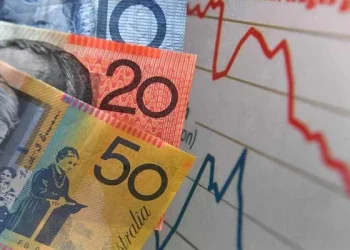In the dynamic world of foreign exchange (Forex), understanding currency conversions is crucial for both traders and individuals looking to make international transactions. In this article, we will delve into the conversion of 3000 Indian Rupees (INR) to Australian Dollars (AUD). We will explore the current exchange rates, factors influencing currency values, and effective trading strategies that can benefit Forex traders and investors alike.
Understanding Currency Conversion
Currency conversion is the process of exchanging one currency for another at an agreed-upon rate. The exchange rate is determined by various factors, including economic conditions, interest rates, inflation, and geopolitical stability. For anyone traveling, investing, or trading internationally, knowing how to convert currencies is essential.
As of the latest data, the exchange rate for INR to AUD fluctuates around 0.017 to 0.018. However, exchange rates can change frequently, influenced by market demand and supply, making it crucial to check the latest rates before any transaction.
Conversion Calculation
To convert 3000 INR to AUD, you would typically use the following formula:
Amount in AUD=Amount in INR×Exchange Rate (INR to AUD)
Assuming the current exchange rate is 0.0175, the calculation would be:
3000INR×0.0175AUD/INR=52.5AUD
Therefore, 3000 INR is approximately 52.5 AUD.
Where to Check Exchange Rates
To find the most accurate and current exchange rates, consider the following sources:
Banks and Financial Institutions: Most banks offer currency conversion services and provide daily exchange rates.
Forex Platforms: Online Forex trading platforms provide real-time exchange rates and historical data, allowing traders to make informed decisions.
Currency Converter Websites: Websites like XE.web and OANDA provide quick conversions and are updated frequently.
Financial News Services: Bloomberg and Reuters offer updates on the Forex market, including exchange rates.
Factors Influencing Currency Exchange Rates
Understanding the factors that influence exchange rates can provide valuable insights for traders. Here are some of the primary factors:
1. Economic Indicators
Economic health indicators, such as Gross Domestic Product (GDP), employment rates, and manufacturing output, can affect currency strength. A strong economy typically leads to a stronger currency.
2. Interest Rates
Central banks control interest rates, which can attract foreign capital. Higher interest rates offer lenders in an economy a higher return relative to other countries. Consequently, this can increase the value of a country’s currency.
3. Inflation
Countries with lower inflation rates typically see an appreciation in the value of their currency in comparison to the currencies of their trading partners. High inflation erodes purchasing power and reduces currency value.
4. Political Stability and Economic Performance
A country’s political stability and economic performance are crucial. Uncertainty, instability, or economic downturns can negatively impact currency values.
5. Market Sentiment
Market sentiment refers to the overall attitude of investors toward a particular currency. If investors believe a currency will strengthen, they are more likely to buy it, increasing its value.
6. Speculation
Speculation is a significant driver in the Forex market. Traders and investors often make decisions based on predictions of future events, which can create volatility and influence exchange rates.
Trading Strategies for Forex Traders
Now that we have covered the basics of currency conversion and the factors influencing exchange rates, let’s explore effective trading strategies for Forex traders.
1. Day Trading
Day trading involves executing multiple trades within a single trading day. Traders take advantage of small price fluctuations and aim to close all positions before the market closes. Day trading requires a solid understanding of market trends, quick decision-making, and a disciplined approach.
2. Swing Trading
Swing trading focuses on capturing short to medium-term gains over a few days to several weeks. Traders analyze price patterns and use technical analysis to identify entry and exit points. Swing traders benefit from market volatility and often hold onto positions longer than day traders.
3. Scalping
Scalping is a trading strategy that involves making numerous trades to profit from small price changes. Traders using this strategy often hold positions for a few seconds to a few minutes. Scalpers require a high level of focus and a quick execution process.
4. Trend Following
Trend following strategies are based on the idea that currencies tend to move in trends. Traders look for upward or downward trends and make trades that align with these movements. Trend-following can be a longer-term strategy, relying on consistent analysis of market indicators.
5. Breakout Trading
Breakout trading focuses on price movements when a currency breaks through a significant support or resistance level. Traders enter positions when the price moves beyond these levels, expecting continued momentum in the same direction.
6. Position Trading
Position trading is a long-term strategy where traders hold onto their positions for weeks, months, or even years. This strategy requires thorough fundamental analysis and an understanding of macroeconomic factors.
7. News Trading
News trading involves making trades based on news releases and economic reports. Traders often analyze the potential impact of news on currency values, allowing them to capitalize on volatility created by major announcements.
Tools for Forex Traders
To implement these trading strategies effectively, traders utilize various tools and resources. Here are some essential tools:
1. Trading Platforms
Forex traders use trading platforms such as MetaTrader 4 (MT4), MetaTrader 5 (MT5), or TradingView to execute trades, analyze charts, and access market data.
2. Economic Calendars
Economic calendars provide information on upcoming economic events, including interest rate announcements, employment reports, and GDP releases. Traders can use this information to plan their trading strategies.
3. Technical Analysis Tools
Technical analysis tools, such as chart patterns, indicators (e.g., Moving Averages, RSI), and trend lines, help traders analyze price movements and identify potential entry and exit points.
4. Risk Management Tools
Effective risk management is crucial in Forex trading. Traders use stop-loss orders, take-profit orders, and position sizing to manage risk and protect their investments.
5. Educational Resources
Continuous learning is vital for successful trading. Online courses, webinars, and trading forums provide valuable insights and strategies for traders at all levels.
Conclusion
Converting currencies, such as 3000 INR to AUD, is an essential aspect of international finance, whether for personal transactions or Forex trading. Understanding the factors that influence exchange rates and employing effective trading strategies can help traders make informed decisions in the ever-changing Forex market.
By staying updated on current market conditions, utilizing the right tools, and continuously educating oneself, traders can navigate the complexities of currency conversion and Forex trading with confidence. As you embark on your trading journey, remember that knowledge, strategy, and discipline are your greatest allies in achieving success in the Forex market.
With this comprehensive understanding of currency conversion, trading strategies, and market influences, you are now better equipped to navigate the foreign exchange market and convert currencies effectively. Whether you are trading for profit or planning for travel, the insights provided in this article will serve you well in your financial endeavors.
Related Topics:

























